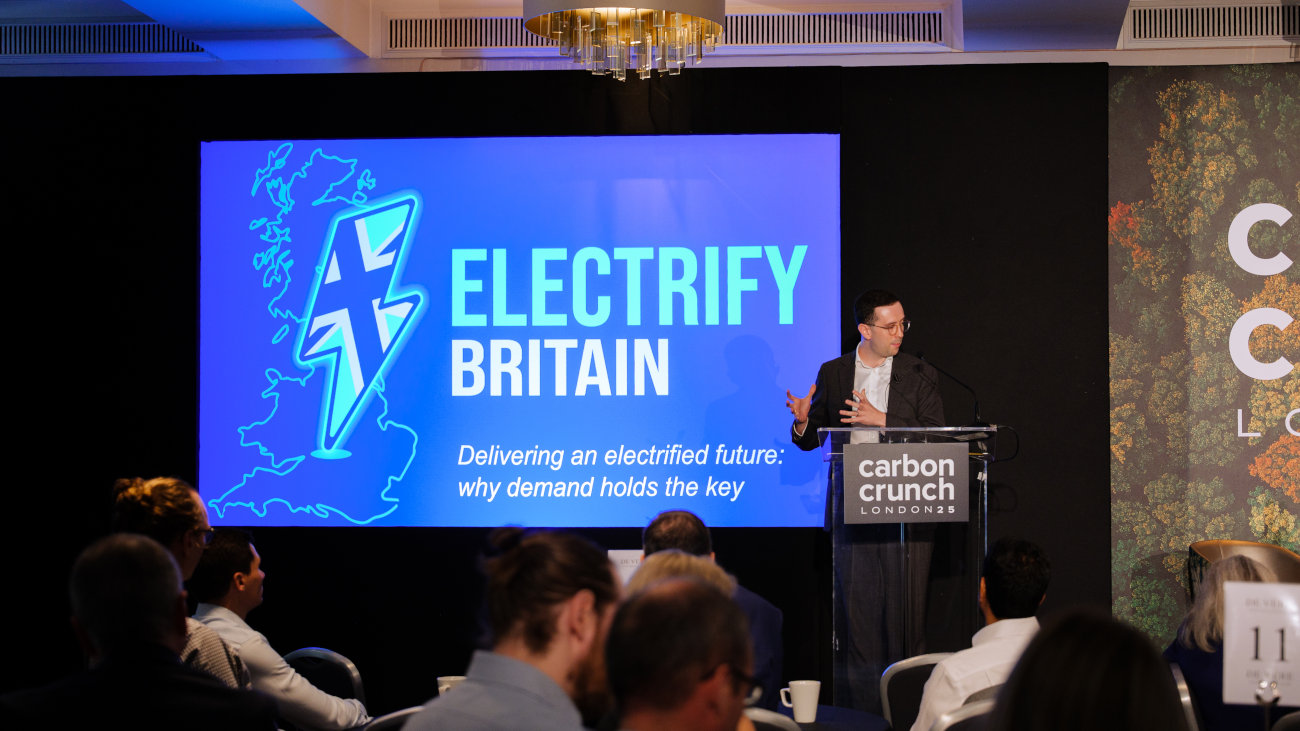The role of policy in driving energy decarbonisation
Achieving net zero requires more than just finance, technology and infrastructure—it also depends on aligning policy, commercial interests, and public support
Lowering electricity prices is seen as essential for decarbonisation but current policies are making electricity more expensive than gas
Carbon Crunch 2025 speakers agreed that policy changes are needed to make electricity cheaper, ensure investor confidence and make the transition to net zero fairer for the public
“The energy transition has hit a crunch point,” Electrify Britain director of policy and advocacy Ben Westerman told the audience at Carbon Crunch. “The investment, political and economic cases that used to work together in harmony, do not do so anymore.
“They are now pulling in different directions and unless we realign them, unless we can make electrification both investable and popular, we risk losing momentum just as the technologies, capital and urgency are finally in place.”
Electrify Britain is a collaborative effort from EDF and Octopus Energy formed last year to sit in what Ben described as “that uneasy space between policy, commercial reality and politics”. He said that the two companies have different business models but a shared belief that there is more to decarbonisation of energy than finance, technology and building more infrastructure.

Achieving decarbonisation
Formed in a similar post-election period in 2024, the government’s Clean Power Commission was set up to deliver decarbonisation of the energy network by 2030. “It was created to deliver a focused effort on cutting through normal regulatory hurdles that can make delivery happen at pace and at scale,” explained Mott MacDonald group head of strategy Simon Harrison who spoke at Carbon Crunch in his capacity as one of the government’s Clean Power Commissioners.
“The plan behind The Clean Power Mission is all about lower cost energy and energy security through decarbonisation by accelerating and completing a large investment in onshore and offshore wind power, solar battery storage and a focus on demand and flex. The Clean Power Action Plan sets out how the government will remove the blockers, including planning issues and reducing the risk to delivery from judicial reviews, as well as resolving the grid connection queue issues.”
Ben underlined that lowering electricity prices is one of the most critical factors to achieving decarbonisation in the energy sector.
He explained the challenge on achieving that: “Capital wants certainty. Government wants a faster pace but fiscal restraint. The public wants lower bills and those are all rational objectives, but at the moment they are not pulling in the same direction.
“The system we built to underpin the first half of the transition to date was subsidy-led, supply-focused and investor-driven. That's not the system that'll get us to the second half of transition, which is about mass participation, mass adoption and new technologies.
So how do we build that system that the public believes in and feels is fair, but is also one that investors can trust and delivers us clean power?
Electrification
Ben believes that the fundamentals on electrification remain strong – it is the foundation of a resilient, decarbonised economy and is essential to reduce our exposure to variable gas markets and how we build energy security. However, he added that as long as electricity remains more expensive than gas, the electric investment decisions needed to meet net zero will be harder.
“We need to think about electrification as a demand challenge, rather than just being about supply, explained Ben. “Electricity prices are currently 50% higher now that they were at the height of the energy crisis in 2021/2022 and that is increasing the gap between gas and electricity prices, which is known as the spark gap.”
Electricity prices are now 50% higher than the energy crisis in 2021/22
Current policy and how the energy market is set up is creating a blocker and preventing electricity from being cheaper than gas, and that is standing in the way of the UK’s electrification.
Ben called for a change in policy to set the 2030 target up for success: “Understanding how electricity prices are set is key. Wholesale gas prices set the marginal price of electricity but there is a bigger issue around how we charge for electricity in this country – we load costs in the form of levies on to electricity in the way we do not onto gas.
“These levies account for 16% of electricity costs and fund grid build out, the contracts for difference for renewables and schemes to support low-income households. These are all important but there are more coming and if not addressed will continue to push up the price of electricity.
Improving lives
While both Ben and Simon came at the issue from different angles, they both agreed on the need for pace and discussed how electricity decarbonisation needed to be presented in terms of the potential it creates to make the transition to net zero fairer too.
Ben urged the built environment and infrastructure industry to “move away from thinking about generating kilowatts and jobs and make the transition about improving people’s lives”. Similarly, Simon said that the case for the change needed to be viewed as a broader prosperity story, alongside the decarbonisation and resilience benefits it will bring.
Subscribe for exclusive updates
Receive our expert insights on issues that transform business, increase sustainability and improve lives.



